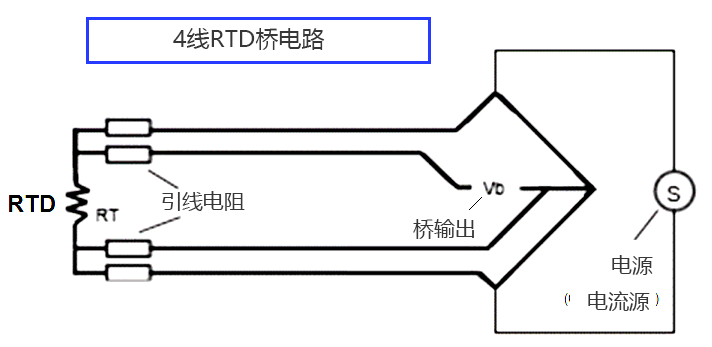

How does the 4 -line RTD temperature sensor work?
4 line RTD temperature sensor principle
The most accurate lead configuration is the "real" 4 -line configuration. In the real 4 -wire configuration, the resistance of the lead will not affect the resistance of the sensor.
4 line structures are mainly used to need to be close to accuracy. In the 4 -line RTD temperature sensor , the actual resistance of the lead can be determined and removed from the sensor measurement.
The real 4 -line measurement uses the current potential method. The current -known value (i+) current passes the sensor along the "current" lead. The voltage generated at both ends of the sensor is measured using the "electrocompany" lead (VSENSOR). The resistance of the sensor is calculated by removing the measured voltage by the known current.

The 4 -wire circuit is a real 4 -wire bridge. Its working principle is to use electric wires 1 and 4 to power the circuit, and use wire 2 and 3 to read. This real bridge method will compensate any difference in the lead resistance.
The resistance of the lead is not a factor, because:
● Any point of the current value in the circuit is equal. It has nothing to do with the resistance of the lead.
● The input impedance of the voltage measurement circuit is high enough to prevent any significant current in the voltage lead. Because there is no current flow, the voltage along the potential lead will not change along its length.
4 line RTD temperature sensor bridge circuit


